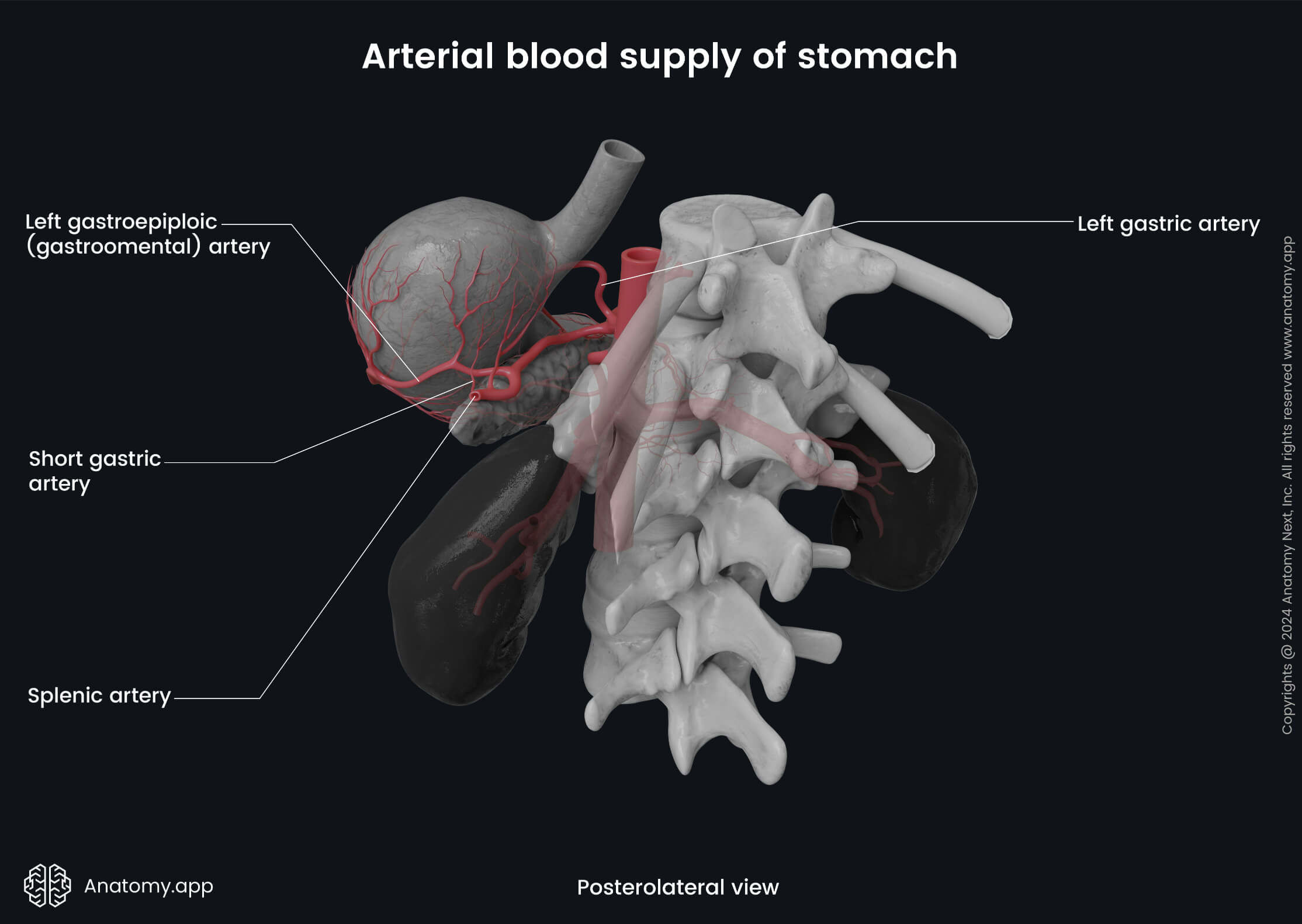- Anatomical terminology
- Skeletal system
- Joints
- Muscles
- Heart
- Blood vessels
- Blood vessels of systemic circulation
- Aorta
- Blood vessels of head and neck
- Blood vessels of upper limb
- Blood vessels of thorax
- Blood vessels of abdomen
- Blood vessels of pelvis and lower limb
- Blood vessels of systemic circulation
- Lymphatic system
- Nervous system
- Respiratory system
- Digestive system
- Urinary system
- Female reproductive system
- Male reproductive system
- Endocrine glands
- Eye
- Ear
Splenic artery
The splenic artery (also called lineal artery, Latin: arteria splenica, arteria lienalis) is the longest branch of the celiac trunk. It is an unpaired blood vessel that supplies oxygenated blood to the spleen, also giving some branches to the pancreas and stomach. The artery travels along the superior margin of the pancreas and is known for its incredibly torturous course to the spleen.

The splenic artery travels within the splenorenal ligament, dividing into several branches, which enter the hilum of the spleen. As it passes along the superior border of the pancreas, it gives off small branches to the pancreas, supplying its neck, body, and tail. Before reaching the spleen, the splenic artery gives rise to short gastric arteries. They pass through the gastrosplenic ligament to supply the fundus of the stomach.

The splenic artery also gives rise to the left gastro-omental artery, also known as left gastroepiploic artery. It travels to the right along the greater curvature of the stomach, and anastomoses with the right gastro-omental artery, which is a branch of the gastroduodenal artery.
